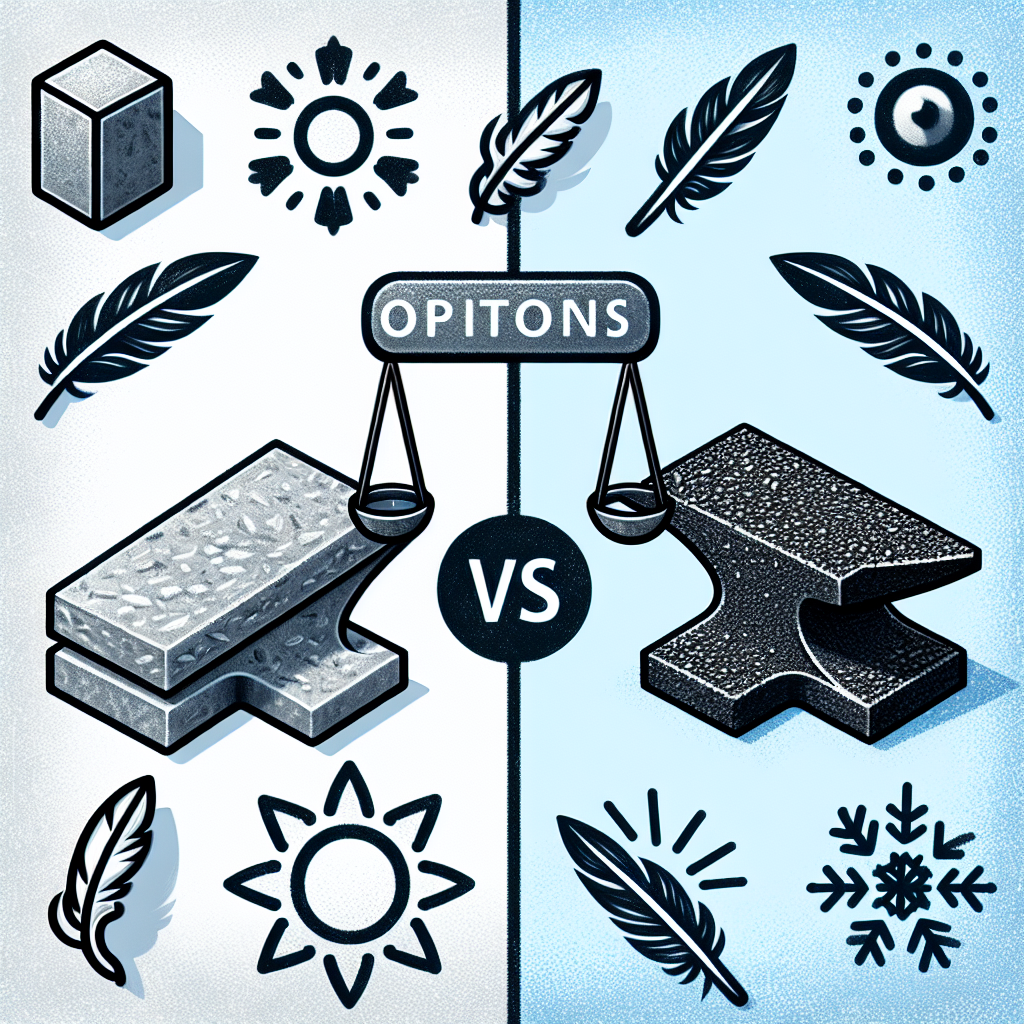When it comes to paving a driveway, parking lot, or public road, two of the most common materials considered are concrete and asphalt. While both options have their merits, understanding the pros and cons of each can help you make an informed decision. In this article, we’ll explore the characteristics of concrete and asphalt surfaces, comparing them to help you find the best fit for your needs.
A Brief Overview of Concrete and Asphalt
Before diving into the pros and cons, it’s essential to clarify what we mean by concrete and asphalt surfaces.
Concrete: Composed of cement, sand, gravel, and water, concrete is a mixture that hardens to form a durable, long-lasting surface. Its typically light gray appearance gives it a unique aesthetic appeal, making it a favored choice for driveways, sidewalks, and commercial projects.
Asphalt: Asphalt is a petroleum-based product, made up of a mix of aggregates and a sticky black binder. It offers a smooth, dark finish and is frequently used for roadways and parking lots due to its cost-effective nature and quick installation.
Pros of Concrete Surfaces
1. Durability and Longevity
One of the most significant advantages of concrete is its durability. A properly installed concrete surface can last anywhere from 25 to 30 years, outpacing asphalt by a significant margin. It can also withstand extreme weather conditions, making it an ideal choice for regions with heavy rainfall or extreme heat.
2. Low Maintenance Requirements
Concrete surfaces require less maintenance compared to asphalt. They don’t need regular seal coating, cracking filler, or resurfacing, saving you both time and money in the long run.
3. Aesthetic Versatility
Concrete offers a range of design possibilities. It can be stained, stamped, or textured to create a unique finish. Whether you’re aiming for a rustic look or a modern aesthetic, concrete can be tailored to meet your vision.
4. Energy Efficiency
Concrete reflects sunlight, helping keep the surrounding area cooler. This characteristic is particularly beneficial in urban areas, contributing to the reduction of the urban heat island effect.
Cons of Concrete Surfaces
1. Initial Cost
The upfront cost of concrete is generally higher than that of asphalt. If you are on a tight budget, this can be a significant deciding factor.
2. Longer Installation Time
Pouring concrete takes time to cure properly, which could lead to extended project timelines, especially if you need a large area covered. It’s important to plan for those extra days of setting.
3. Vulnerability to Cracking
While durable, concrete can be susceptible to cracking if not installed correctly or if the ground underneath shifts. Proper installation is crucial to mitigate this risk.
Pros of Asphalt Surfaces
1. Lower Initial Cost
Asphalt surfaces typically cost less to install than concrete options. If budget constraints are a key consideration, asphalt may be the more economical choice.
2. Quicker Installation
Asphalt can be installed relatively quickly, allowing for shorter construction times. This makes it a popular option for businesses that need to minimize downtime during renovations or expansion.
3. Flexibility and Adaptability
Unlike concrete, asphalt has a certain amount of flexibility, making it less likely to crack under ground movement. This can be a vital consideration in areas where freeze-thaw cycles are common.
4. Easier Repairs
If damage occurs, asphalt is easier to repair than concrete. Patch jobs can be a simple process, allowing for seamless repairs that maintains the integrity of the surface.
Cons of Asphalt Surfaces
1. Shorter Lifespan
Asphalt surfaces typically last around 15 to 20 years, which is significantly less than concrete. While maintenance can extend its life, the need for eventual replacement is more frequent.
2. Regular Maintenance Needed
For optimal performance, asphalt requires regular maintenance, including seal coating every few years to protect the surface from wear and tear, UV rays, and weather.
3. Heat Absorption
Asphalt absorbs heat, which can contribute to hot surface temperatures in the summertime. This factor might not be ideal for urban settings where heat management is essential.
Making Your Decision: Concrete vs. Asphalt
Choosing between concrete and asphalt surfaces is not a one-size-fits-all decision; it depends on various factors including your budget, climate, aesthetic preferences, and the intended use of the surface.
If longevity and low maintenance are at the forefront of your decision-making process, concrete may be the better option. On the other hand, if you require a cost-effective, quick installation, asphalt may better suit your needs.
Final Thoughts
In conclusion, both concrete and asphalt have unique advantages and disadvantages that should be weighed carefully before making a decision. Taking into account your specific needs will ensure you select the best surface for your project. Whether you prioritize longevity and aesthetics or budget and maintenance, understanding the nuances of concrete and asphalt surfaces will help pave the way toward a smart investment for years to come.
Remember, when in doubt, consulting with a paving professional can offer additional insights tailored to your situation, helping you make a more informed decision.


